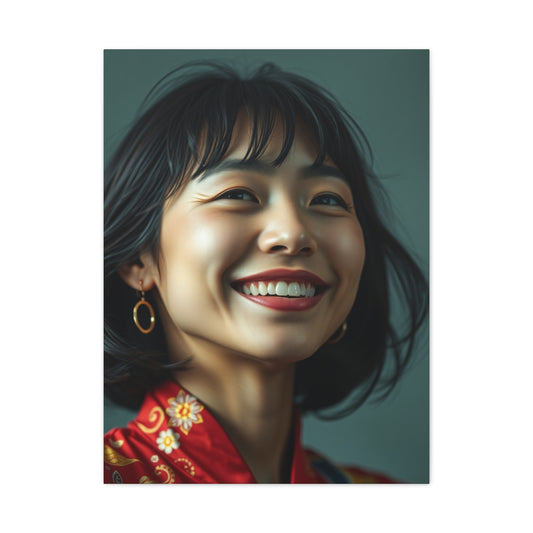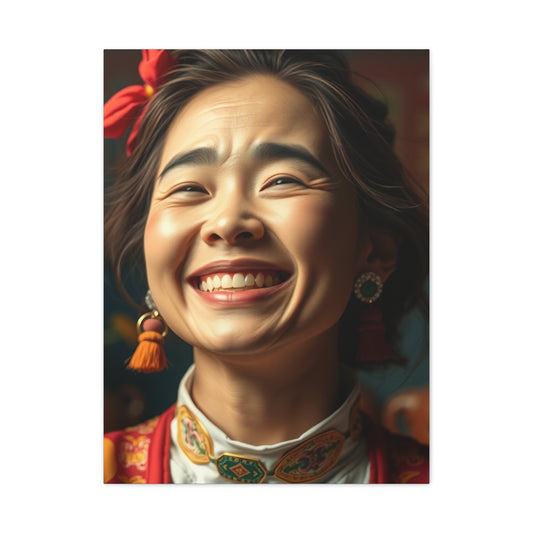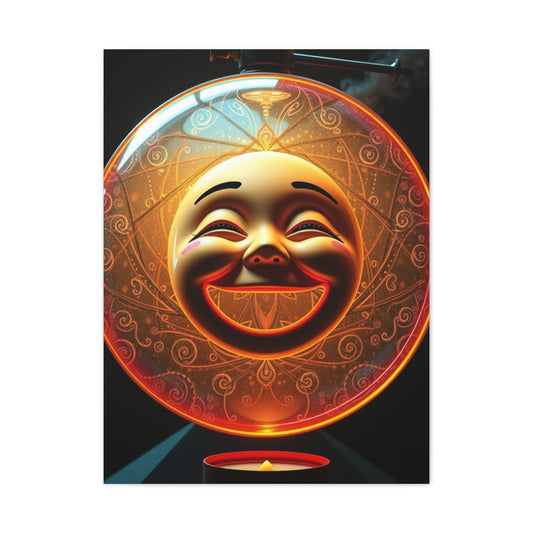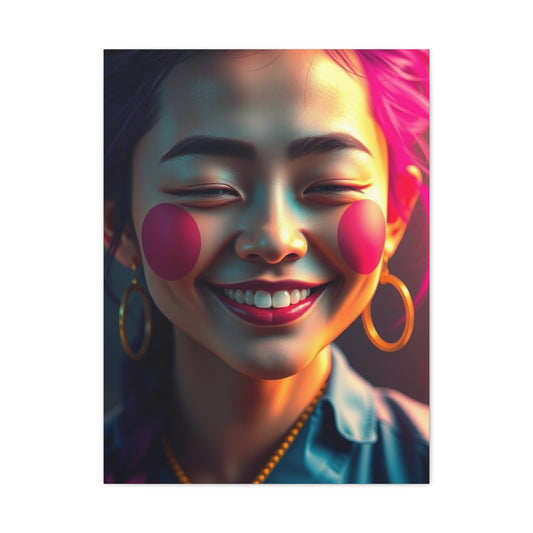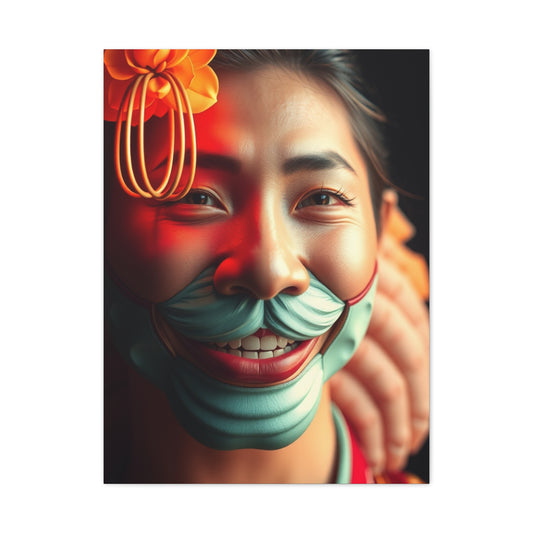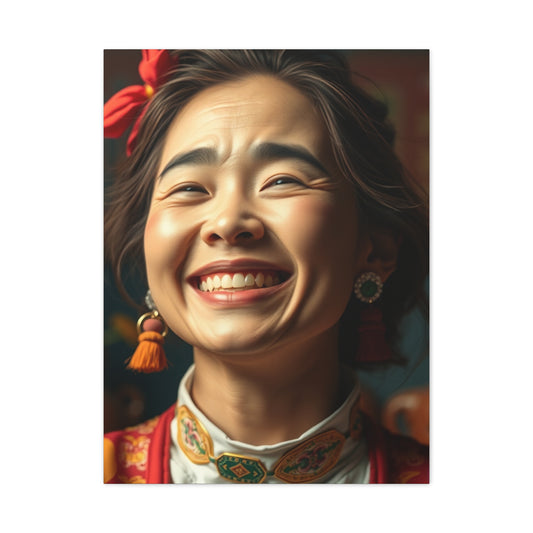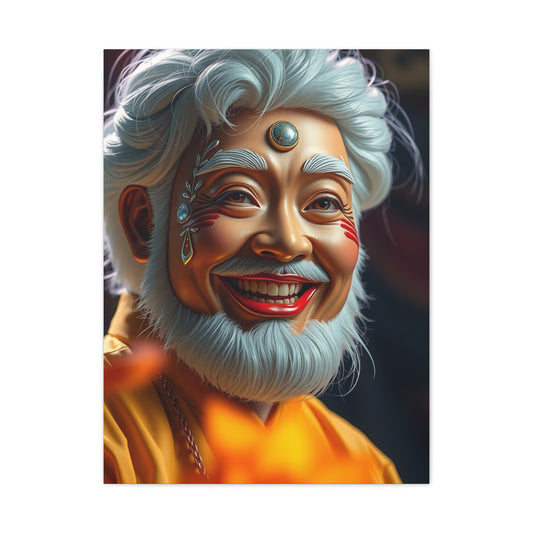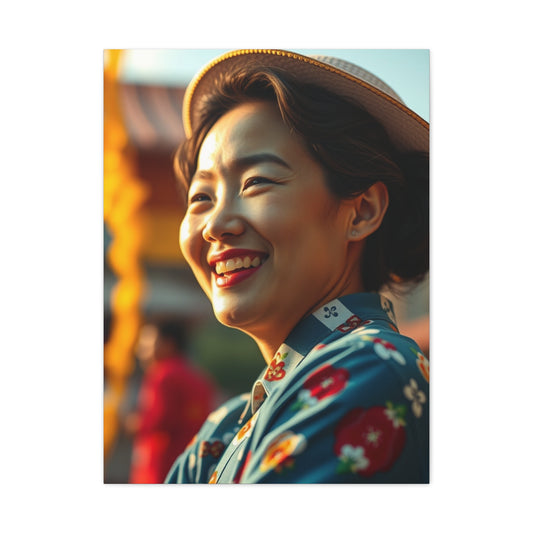How Happiness Wall Art Enhances Family Life and Connection
The spaces we inhabit profoundly shape our emotional landscape, influencing our moods, interactions, and overall sense of well-being. In the context of family life, the home environment is far more than a physical shelter; it is a repository of memories, a stage for daily interactions, and a sanctuary where bonds are nurtured. Among the many elements that contribute to a harmonious household, wall art holds a particularly unique position. Though often overlooked, the aesthetic and emotional resonance of artwork can subtly, yet powerfully, affect how family members feel, relate, and engage with one another.
Art is not merely decorative; it is a medium through which emotions are communicated, moods are shaped, and atmospheres are cultivated. Every brushstroke, hue, and composition has the potential to invoke feelings that ripple through the household. The colors chosen in artwork, for example, can create dynamic emotional undertones within a room. Vibrant colors such as amber, tangerine, or cerulean can imbue spaces with energy, warmth, and optimism, infusing common areas like kitchens, living rooms, or dining spaces with an inviting, convivial aura. These tones often trigger feelings of exuberance and social engagement, making them ideal for spaces where family gatherings, discussions, or celebrations occur.
Conversely, softer palettes—such as muted greens, pastel blues, and gentle lavenders—contribute to serenity and introspection. Bedrooms, reading nooks, and quiet lounges benefit from artwork in these tones, as they encourage relaxation, contemplation, and restorative moments. The tranquil ambiance created by these colors helps alleviate the day-to-day stresses of family life, fostering an environment where calm reflection and meaningful conversations can flourish.
Beyond color, the subject matter of the artwork significantly shapes the emotional resonance of a room. Landscapes, botanical illustrations, and abstract representations of nature evoke a sense of expansiveness, grounding, and connection to the natural world. These themes can reduce psychological tension, promoting an atmosphere of calmness and contemplation. Abstract forms, particularly those with flowing lines or gentle geometric patterns, encourage the mind to wander creatively, offering both adults and children an opportunity for mental repose and imaginative exploration.
Artistic style also contributes to the psychological tenor of a space. Impressionist paintings, with their delicate interplay of light and shadow, often evoke nostalgia and gentle emotional reflection. Contemporary or modern art, with bold forms and striking contrasts, can energize and stimulate thought, generating a lively, intellectually engaging environment. Understanding the interplay between style, color, and subject allows families to intentionally craft emotional landscapes within their homes, ensuring that each room fulfills a purpose beyond mere functionality.
One of the most profound yet understated benefits of incorporating thoughtful wall art is its ability to harmonize the emotional rhythms of a household. Family members often experience divergent moods at different times—one person may return from work feeling drained, while another may be brimming with energy after a creative endeavor. Artwork can serve as a subtle mediator in these situations, providing visual cues that encourage relaxation, optimism, or playful engagement. For instance, a large canvas painted in warm hues can immediately uplift the spirits of anyone entering a room, creating a welcoming and energizing environment. Conversely, a serene, nature-inspired piece can signal a space of calm, subtly encouraging tranquility even amidst household bustle.
Color psychology offers intriguing insights into how artwork affects emotions. Yellow, for example, is traditionally associated with happiness, intellectual energy, and optimism. When integrated into art pieces, yellow accents can stimulate lively discussion, encourage cheerful interactions, and even invigorate problem-solving and creativity. Orange, similarly, is linked to warmth, enthusiasm, and social engagement, making it ideal for family-centric areas where communal activities or shared hobbies take place. Blue tones, in contrast, are often associated with tranquility, reliability, and focus. Using blue-hued art in bedrooms or workspaces fosters concentration, mental clarity, and emotional stability, which are vital for maintaining family equilibrium.
However, the emotional impact of wall art extends beyond color theory alone. Composition, texture, and scale play equally pivotal roles in shaping a room’s atmosphere. Large, immersive pieces can create a sense of expansiveness and grandeur, while smaller, intricately detailed works invite viewers to linger, observe, and reflect. Textural elements, such as layered brushstrokes, mixed media, or tactile materials, engage the senses more fully, creating a multisensory experience that heightens emotional resonance. Such artwork allows family members to experience subtle shifts in mood, focus, and connection simply through the act of observation.
Placement within the home is equally consequential. Artwork displayed at eye level in common areas naturally draws attention, serving as a focal point around which interactions can unfold. Positioning a calming piece in a corridor or near a staircase can subtly influence transitions between spaces, setting the emotional tone for each movement through the home. Strategic placement ensures that art does not merely exist as background decoration but becomes an integral component of the home’s emotional architecture.
Wall art can also act as a visual narrative, telling the story of a household in ways that words sometimes cannot. Imagery that evokes shared experiences, cultural connections, or collective aspirations nurtures a sense of cohesion and belonging. For example, artwork featuring elements of nature can symbolize continuity and growth, subtly reinforcing the family’s journey through life. Abstract pieces may invite individual interpretation, prompting dialogue, imagination, and collaborative exploration among family members. These shared engagements deepen emotional bonds, creating a home environment where communication and empathy flourish.
Emotional influence is not limited to adult family members. Children, in particular, are highly sensitive to their surroundings, and the presence of thoughtfully curated artwork can profoundly impact their emotional development. Bright, whimsical, and imaginative art stimulates creativity, encourages self-expression, and cultivates a playful atmosphere. Calm, serene artwork helps children learn to regulate emotions, providing visual cues for moments of quiet reflection or mindfulness. By thoughtfully integrating art throughout the home, parents can subtly guide emotional growth, modeling the importance of aesthetics, self-expression, and environmental harmony.
In addition, wall art catalyzes memory reinforcement. Images of landscapes, meaningful objects, or abstract representations of important events can trigger recollections of shared experiences. This can manifest as spontaneous conversations during family meals, reminiscence during leisure time, or quiet reflection in private moments. By creating a visually rich environment, families invite an ongoing dialogue between past experiences and present emotions, fostering a continuous sense of togetherness and continuity.
The interplay between visual stimuli and social dynamics further enhances the impact of wall art. Art that is thought-provoking or emotionally resonant often sparks conversation, laughter, and debate. This not only cultivates social cohesion but also encourages cognitive engagement, empathy, and collaborative thinking among family members. In essence, art becomes a silent facilitator of dialogue, enriching interactions while nurturing emotional intelligence.
Moreover, the longevity of wall art ensures that its emotional benefits persist over time. Unlike transient décor elements or fleeting trends, carefully chosen artwork can remain relevant and resonant for decades. Family members grow alongside the art, forming subtle emotional associations that strengthen as memories accumulate. A single painting can become a cherished symbol of comfort, inspiration, or shared values, contributing consistently to a home’s emotional climate.
In practical terms, the incorporation of art into family spaces requires mindfulness and intentionality. It is not merely the presence of art that produces emotional impact but the thoughtful selection, arrangement, and contextual alignment with family needs. Artwork should reflect the collective identity of the household, resonate with individual sensibilities, and complement the spatial dynamics of each room. By harmonizing aesthetic choices with emotional objectives, families can transform their walls into instruments of joy, calm, and connection.
Finally, wall art offers an accessible avenue for ongoing adaptation and evolution within the home. Families can rotate pieces to reflect seasonal changes, celebrate milestones, or introduce new themes that mirror their evolving narratives. This adaptability ensures that art remains relevant, dynamic, and intimately linked to the lived experience of the household. Through these conscious choices, the home becomes a living gallery—a space where beauty, emotion, and familial identity converge seamlessly.
Building Connection Through Personalized Wall Art
Art within a family home is far more than a visual embellishment; it is a profound medium through which relationships are nurtured, memories are celebrated, and personal identities are expressed. While colors, styles, and compositions shape the mood of a room, personalized wall art holds a unique capacity to strengthen emotional bonds among family members. By reflecting shared experiences, commemorating significant milestones, and incorporating elements that resonate with individual identities, artwork can become a living chronicle of family life, fostering connection and intimacy in ways that conventional décor cannot replicate.
Personalized artwork often begins with a narrative. Each family has a story, and the walls of a home provide a canvas upon which this story can be visualized. Photographs of cherished vacations, snapshots from birthdays, or candid moments of laughter and play capture the essence of familial experiences. When displayed thoughtfully, these images transcend mere decoration; they become anchors for memory, evoking joy, nostalgia, and a sense of continuity. A single photograph, carefully framed and placed in a prominent location, can instantly transport family members back to a shared moment, rekindling emotions associated with togetherness and communal delight.
Beyond photography, commissioned art pieces such as family portraits or custom illustrations offer another avenue for personalization. These works, created with intention and care, serve as tangible representations of familial identity. Unlike mass-produced prints, commissioned artwork carries with it the nuances of individual likenesses, personality traits, and relationships, allowing family members to see themselves represented in a way that is both accurate and emotionally resonant. The presence of such art in common areas—living rooms, hallways, or entryways—serves as a daily affirmation of connection, subtly reinforcing the bonds that unite the household.
Incorporating symbolic elements within personalized artwork can deepen its significance. For instance, art that reflects family hobbies, shared passions, or cultural heritage offers layers of meaning beyond the visual aesthetic. A painting that includes motifs representing music, travel, or culinary traditions not only beautifies the space but also functions as a celebratory acknowledgment of what defines the family’s collective identity. This approach imbues walls with stories and symbolism, transforming the home into a gallery that celebrates uniqueness and shared history simultaneously.
Family involvement in the creation of wall art further enhances the emotional impact. Collaborative projects, where each member contributes ideas, sketches, or finished pieces, create shared ownership and investment in the home’s aesthetic environment. Children’s drawings, abstract interpretations of family experiences, or mixed-media projects created collectively can be displayed with pride, fostering a sense of accomplishment and belonging. This participatory approach transcends the static nature of traditional art, turning the act of decoration into a dynamic exercise in co-creation and mutual expression.
The emotional resonance of personalized art is magnified when it evokes memories of specific events or experiences. Artworks inspired by family travels, anniversaries, or milestones function as visual diaries, chronicling journeys both literal and metaphorical. A painting of a serene lakeside visited during a summer vacation can spark recollections of laughter, exploration, and relaxation, transporting viewers to moments of shared delight. Similarly, a custom illustration commemorating a child’s first steps or a family’s relocation to a new home preserves a sense of continuity, reminding each member of the evolving narrative that they inhabit together.
Moreover, personalized wall art reinforces intergenerational connections. Displaying artwork that includes multiple generations—grandparents, parents, and children—honors lineage and shared values. Portraits or symbolic pieces that depict family trees, ancestral heritage, or cultural rituals create a visual dialogue between past and present, fostering respect, understanding, and continuity. Younger family members gain a tangible sense of their roots, while older generations witness their legacy being celebrated and appreciated. This interplay between generations strengthens familial identity and encourages a collective sense of pride and belonging.
Art can also be used to memorialize intangible aspects of family life. Abstract pieces representing emotions, relationships, or collective aspirations provide a canvas for subtle storytelling. Swirling shapes, layered textures, and symbolic colors can encapsulate the energy of familial love, resilience, and unity. Such works invite reflection and interpretation, allowing each member to engage with the art in a personal way, fostering empathy and emotional awareness. These abstract narratives offer depth that conventional photographs or prints may not capture, creating a richer, more immersive experience of family life within the home.
Another compelling aspect of personalized art is its ability to act as a catalyst for communication. Artwork that depicts shared experiences or memories can serve as a springboard for conversation, reflection, and storytelling. Family members may recall anecdotes, share feelings, or discuss perspectives that might otherwise remain unspoken. A framed painting inspired by a collective vacation, for instance, may lead to recounting humorous incidents or highlighting moments of achievement and growth. These exchanges cultivate connection, reinforcing emotional intimacy and encouraging active engagement with one another.
In addition, incorporating family names, initials, or important dates into artwork strengthens the sense of ownership and belonging. Typography-based designs, custom calligraphy, or symbolic representations of names and milestones provide daily visual reminders of familial identity. Artworks that include these elements serve as both decoration and affirmation, subtly reinforcing the notion that each member is valued and integral to the family unit. This personalization transforms a house into a home, creating a sense of security, identity, and pride that permeates the living environment.
Personalized art also allows for an evolving narrative. As families grow, change, and experience new milestones, artwork can be updated, added to, or adapted to reflect these developments. Children’s achievements, new family members, or significant life events can be commemorated through additional pieces, maintaining a living, breathing record of the household’s journey. This dynamic approach ensures that wall art remains relevant, engaging, and intimately connected to the rhythms of everyday life, rather than existing as a static backdrop.
The act of selecting and curating personalized art also fosters mindfulness and intentionality within the home. Rather than passively accepting decorative elements, families engage in active decision-making, considering how each piece resonates with their collective identity, emotional needs, and spatial dynamics. This process encourages reflection on values, priorities, and aesthetics, promoting a deliberate approach to creating environments that nurture emotional well-being.
Moreover, personalized wall art provides opportunities to celebrate creativity and artistic expression within the family. Children’s drawings, handcrafted pieces, or collaborative projects allow for the inclusion of unconventional materials, experimental techniques, and imaginative approaches. Displaying such works demonstrates appreciation for individual effort and originality, reinforcing a culture of encouragement, curiosity, and creative exploration. Over time, these pieces may become treasured artifacts, embodying both artistic growth and the evolving story of the family.
The spatial arrangement of personalized artwork is also crucial in enhancing its impact. Grouping pieces that share thematic or emotional resonance can create visually cohesive and narratively rich displays. Galleries of family photographs, layered with personal sketches and symbolic pieces, encourage viewers to linger, observe, and reflect on the interconnected stories being told. Placement in common areas, such as living rooms or hallways, maximizes visibility, ensuring that the art continues to function as a unifying presence, while positioning in private spaces provides opportunities for intimate reflection and personal engagement.
Incorporating personalized art in transitional spaces—staircases, corridors, or entryways—can also shape the emotional experience of movement through the home. These areas, often overlooked in terms of décor, can become stages for storytelling, reflection, and emotional continuity. Visitors and family members alike are subtly reminded of the shared history and bonds that define the household, reinforcing a sense of stability, connection, and identity.
Personalized wall art also plays a pivotal role in shaping the emotional climate of celebrations and gatherings. During birthdays, anniversaries, or seasonal festivities, curated artwork can act as a visual centerpiece, evoking memories and creating an ambiance that supports joy, reflection, and collective participation. Pieces that commemorate past occasions can enhance the meaning of present celebrations, linking memories across time and creating a layered sense of familial continuity.
Furthermore, the psychological benefits of personalized art extend to emotional regulation and resilience. Visual reminders of positive experiences, shared achievements, and familial support can buffer stress, promote optimism, and strengthen coping mechanisms during challenging times. Artwork serves as a visual affirmation of enduring relationships, fostering confidence, security, and emotional stability within the family environment.
In essence, personalized wall art transforms spaces into living narratives. Each piece contributes to a dialogue between memory, identity, and emotion, offering a visual manifestation of the family’s collective journey. Through thoughtful curation, collaborative creation, and strategic placement, artwork becomes more than decoration; it becomes a living testament to love, connection, and shared experience.
By embracing personalized art, families cultivate an environment in which each member feels recognized, valued, and integral to the household’s story. The interplay of visual beauty, narrative significance, and emotional resonance fosters intimacy, encourages reflection, and strengthens bonds. Walls adorned with personal expressions of identity and shared experience become vessels of connection, turning a house into a home where relationships are celebrated, memories are preserved, and the family’s journey is honored with artistry and intention.
Inspiring Joy Through Playful and Whimsical Wall Art
The presence of art in the home extends far beyond aesthetic appeal; it is a conduit for emotion, imagination, and shared experiences. In family life, playful and whimsical wall art plays a particularly important role in cultivating joy, sparking creativity, and enhancing everyday interactions. Art that engages the senses with humor, vibrancy, and imaginative themes fosters a lively, dynamic atmosphere where both children and adults feel encouraged to express themselves, explore ideas, and delight in the simple pleasures of living together.
Whimsical wall art is characterized by its imaginative, often fantastical qualities. Unlike strictly formal or traditional pieces, it evokes curiosity, amusement, and emotional engagement. Themes may include fantastical landscapes, surreal animals, charming characters, or abstract forms that invite viewers to reinterpret familiar concepts in unexpected ways. Such art transforms ordinary walls into realms of creativity, offering a sense of wonder and delight with every glance. In children’s bedrooms, playrooms, and educational spaces, these qualities are particularly valuable, providing a visual stimulus that nurtures imagination, problem-solving, and expressive play.
Humor in artwork also has profound psychological benefits. Images that are amusing, lighthearted, or clever can elicit laughter, reduce stress, and enhance social bonding. For example, a quirky painting in the living room or hallway can serve as a conversational catalyst, prompting family members to share anecdotes, playful remarks, or inside jokes. This shared laughter creates a positive emotional resonance throughout the household, reinforcing familial connection and making communal spaces more inviting. In this way, playful art contributes to an atmosphere of ease and joy, which is essential for sustaining harmonious family relationships.
Playful themes are especially effective when they engage children in ways that are both imaginative and educational. Art featuring animals, whimsical characters, or fantastical scenes can stimulate cognitive development by encouraging observation, interpretation, and narrative thinking. Children often invent stories around visual elements, imagining interactions between characters, exploring new scenarios, and experimenting with creative problem-solving. This imaginative engagement is a form of cognitive play, enhancing both emotional intelligence and intellectual curiosity. Over time, children learn to associate their home environment with creative exploration and emotional expression, cultivating a sense of freedom and comfort in their personal spaces.
Color plays a central role in the impact of playful and whimsical art. Bold, vibrant hues such as magenta, turquoise, and chartreuse stimulate energy, enthusiasm, and engagement, while softer pastel tones create a soothing, dreamlike atmosphere that encourages contemplation and gentle amusement. The combination of bright and soft colors can create a harmonious balance, providing stimulation without overwhelming the senses. When thoughtfully integrated into shared or personal spaces, these color dynamics contribute to emotional equilibrium, ensuring that playful art enhances joy without inducing visual fatigue or distraction.
Interactive elements within wall art can further amplify its playful effect. Art that incorporates three-dimensional components, tactile surfaces, or movable parts engages the viewer physically as well as emotionally. For example, magnetic boards with interchangeable artwork, textured murals, or modular pieces that can be rearranged allow family members to participate directly in shaping their environment. This interactivity encourages collaboration, creativity, and ownership, transforming passive observation into active engagement. Children, in particular, benefit from these interactive experiences, as they encourage hands-on exploration, problem-solving, and imaginative storytelling.
Playful and whimsical art also serves as a medium for celebrating curiosity and individuality. Abstract compositions with unexpected shapes, surrealistic imagery, or fantastical juxtapositions encourage interpretation and personal reflection. Family members may perceive different narratives or emotional resonances within the same artwork, prompting discussion, debate, and appreciation for diverse perspectives. This type of engagement not only strengthens bonds but also cultivates empathy, intellectual curiosity, and critical thinking skills, all of which are invaluable within a supportive family environment.
In addition, the inclusion of culturally inspired playful motifs can deepen both aesthetic appeal and educational value. Art that incorporates folklore, mythology, or traditional storytelling elements invites exploration of heritage and shared identity. Children learn to connect visual imagery with stories, historical context, or moral lessons, creating a bridge between imagination and cultural literacy. Adults, too, can appreciate the layering of meaning, fostering intergenerational dialogue and a deeper understanding of familial and societal traditions. In this sense, whimsical wall art becomes both a tool for amusement and an instrument of education, enriching the family’s intellectual and emotional landscape simultaneously.
Art that stimulates playfulness and creativity also has a positive effect on stress reduction and emotional resilience. Visual cues associated with humor, surprise, or delight can trigger the release of endorphins and reduce cortisol levels, promoting overall well-being. In households where family members navigate busy schedules, work pressures, or academic demands, the presence of playful art offers a consistent reminder of joy, levity, and the importance of communal laughter. Even brief moments of visual engagement with such art can act as emotional resets, fostering calm, optimism, and emotional balance.
Seasonal and thematic rotations further enhance the capacity of playful art to inspire joy. Swapping or introducing artwork that reflects holidays, seasonal changes, or family traditions adds novelty and anticipation to the household environment. Children, in particular, respond enthusiastically to visual cues that signify special occasions, cultivating a sense of wonder and excitement. Seasonal thematic art also encourages reflection and shared anticipation among adults, enriching the emotional texture of everyday life and reinforcing the cyclical rhythm of celebration and family cohesion.
Playful art can also contribute to the cultivation of personal expression in family members of all ages. By observing and interacting with creative compositions, children learn to articulate emotions, experiment with storytelling, and explore abstract thought. Adults, too, benefit from exposure to imaginative visual narratives, finding inspiration, relaxation, or alternative perspectives within the same works. This continuous engagement fosters an environment in which creativity and emotional literacy are valued, empowering each family member to approach both art and life with curiosity and openness.
Integrating whimsical art into communal areas strengthens the household’s sense of collective identity. When artwork evokes laughter, curiosity, or imaginative engagement, it creates shared experiences that become embedded in the family’s social fabric. Hallways adorned with humorous prints, dining areas with playful motifs, and living rooms featuring fantastical illustrations all provide points of convergence where family members can interact, reminisce, and engage in lighthearted banter. This visual scaffolding of joy transforms ordinary spaces into sites of connection, reinforcing relational bonds and enhancing the overall emotional climate.
It is important to note that the effect of playful and whimsical art extends beyond immediate visual stimulation. Repeated exposure to engaging artwork cultivates familiarity, comfort, and emotional attunement. Over time, family members begin to associate specific pieces with positive feelings, memorable conversations, or shared experiences. These associations enrich daily life, turning the home into a repository of emotional meaning, creative inspiration, and enduring joy. The cumulative impact of this visual engagement fosters a resilient, optimistic, and connected household environment.
Interactive and collaborative approaches to wall art further amplify its joyful impact. Encouraging family members to create, adapt, or contribute to whimsical artwork fosters ownership and strengthens the emotional connection to the space. Children may design elements of murals, paint individual sections of larger canvases, or propose ideas for rotating exhibitions. Adults, too, may participate by contributing sketches, selecting themes, or curating pieces that resonate with family values. The collaborative process promotes a sense of accomplishment, reinforces cooperation, and cultivates mutual respect, all while celebrating individual creativity within a shared framework.
The strategic placement of playful and whimsical art is crucial in maximizing its influence. Visual engagement is heightened when pieces are positioned at eye level in areas of frequent interaction, such as living rooms, hallways, kitchens, or family activity rooms. Placement should also consider the intended emotional effect: art meant to stimulate creativity may be most effective in playrooms, craft areas, or study spaces, while humorous or lighthearted pieces may be ideal for shared relaxation zones. By harmonizing content, context, and location, families ensure that artwork consistently enhances both the visual and emotional landscape of the home.
Playful and whimsical wall art can also act as a subtle tool for emotional education. By observing diverse characters, imaginative scenarios, or humorous interactions depicted in artwork, children learn to interpret expressions, navigate social situations, and empathize with differing perspectives. This form of indirect emotional learning complements direct interaction, fostering nuanced social understanding and enhancing the capacity for emotional regulation. In this way, whimsical art serves both aesthetic and pedagogical purposes, enriching family life holistically.
Ultimately, whimsical art transforms walls into vibrant stages for creativity, amusement, and shared experiences. Each glance offers an opportunity to smile, to imagine, and to connect with others in the household. Through thoughtful selection, collaborative creation, and strategic placement, playful and whimsical art becomes a cornerstone of family well-being, fostering a home environment where joy, curiosity, and shared delight are not occasional but continuous, enriching the lives of all who inhabit the space.
Strengthening Family Values and Traditions Through Wall Art
Art is more than a decorative element; it is a visual narrative that communicates identity, beliefs, and emotional resonance. Within a family home, wall art can serve as a powerful medium to reinforce values, celebrate traditions, and cultivate a shared sense of belonging. When thoughtfully chosen and placed, artwork becomes a silent teacher, guiding family members in understanding what is cherished, admired, and aspired to. Beyond aesthetics, it strengthens cohesion, nurtures emotional connection, and provides continuity between generations.
One of the most profound ways wall art contributes to family life is by reflecting the principles that the household upholds. Artworks that incorporate inspirational quotations, family mottos, or symbolic imagery create visual anchors for shared values. For instance, a print featuring words that emphasize gratitude, kindness, or perseverance can subtly influence daily interactions, reminding family members of the behaviors and attitudes that are celebrated within the household. This constant, gentle reinforcement encourages mindfulness, helping both children and adults internalize guiding principles without the need for repeated verbal instruction.
Cultural and heritage-inspired artwork adds another layer of significance. Pieces that incorporate traditional motifs, folklore, or ancestral symbolism create a tangible link to the family’s roots. By displaying such works prominently, households honor their lineage, fostering pride and continuity. Children, in particular, benefit from this exposure, gaining a visual understanding of their heritage and the values embedded within it. Whether depicting historical events, traditional celebrations, or abstract representations of cultural ideals, these pieces serve as bridges between past, present, and future, allowing familial identity to be both celebrated and preserved.
Religious or spiritual artwork also contributes to the reinforcement of values and traditions. Paintings, sculptures, or prints that reference belief systems can serve as daily reminders of faith, reflection, and ethical guidance. Their presence in living areas, dining rooms, or personal spaces creates an environment conducive to contemplation, prayer, or discussion, facilitating the transmission of spiritual practices and moral principles across generations. Art, in this context, functions as both inspiration and instruction, anchoring intangible beliefs in a visible, interactive form.
Visual storytelling within art strengthens the narrative of family life. Illustrations or paintings that depict everyday moments, seasonal rituals, or ceremonial activities act as a form of collective memory. For example, a series of framed images documenting family holidays, annual gatherings, or milestone events creates a chronological narrative that celebrates shared experiences. Such storytelling art not only beautifies spaces but also reinforces the importance of traditions, reminding family members of the continuity and significance of their collective journey.
The emotional impact of value-driven art is reinforced through intentional placement. Artwork that embodies principles such as love, empathy, and gratitude can be positioned in areas of daily congregation, such as dining rooms, kitchens, or living rooms. These are spaces where family members interact frequently, share meals, and engage in conversation, making the artwork’s influence more pronounced. By strategically situating pieces in high-visibility locations, families ensure that values are integrated seamlessly into the rhythm of daily life, subtly guiding behavior and fostering shared understanding.
Art also serves as a vehicle for intergenerational learning. By including children in the selection or creation of value-centered artwork, families encourage dialogue and reflection. Young family members can explore what the artwork represents, discuss its meaning, and relate it to their own experiences. This participatory process nurtures empathy, communication skills, and ethical understanding, empowering children to connect with family principles in a meaningful, active way. Adults, in turn, benefit from witnessing children’s interpretations, which may offer fresh perspectives and deepen mutual appreciation of values.
Personalization enhances the connection between wall art and family identity. Incorporating family names, dates, or symbolic motifs into artwork creates a sense of ownership and relevance. Pieces that commemorate milestones—such as births, achievements, or significant life transitions—act as visual affirmations of collective growth and achievement. This personalization reinforces bonds, celebrates individuality within the family unit, and transforms spaces into repositories of memory and meaning. Over time, these works become cherished heirlooms, linking past experiences with present realities and future aspirations.
Family rituals, whether seasonal, cultural, or personal, can also be reflected through wall art. Seasonal rotations of artwork provide visual cues that signal the passage of time, creating anticipation and celebration. Spring-inspired florals, summer landscapes, autumnal abstracts, or winter-themed illustrations cultivate an evolving environment that mirrors life’s cyclical nature. This rhythm encourages mindfulness, prepares family members for changes, and enhances the sense of living within a space that is attuned to both nature and tradition. Seasonal art reinforces the household’s connection to broader temporal patterns, strengthening the sense of home as a dynamic and responsive environment.
In addition to celebrating established traditions, wall art can inspire new family rituals. Collaborative projects that incorporate meaningful themes, stories, or values encourage shared creation and dialogue. For example, families may engage in a seasonal art rotation project, updating a central display to reflect collective experiences, aspirations, or reflections. Such practices cultivate cooperation, creativity, and intentionality, fostering a living environment where traditions are not merely inherited but actively co-created. This active engagement ensures that values remain relevant, resonant, and intimately connected to the family’s evolving identity.
The interplay between aesthetics and values is crucial in maintaining both engagement and emotional resonance. Art that is visually compelling, harmonious in color, and thoughtfully composed captures attention, making its embedded messages more impactful. Complex compositions, layered textures, or symbolic motifs invite contemplation and dialogue, allowing family members to engage with the artwork on multiple levels. This richness ensures that the home environment stimulates both the intellect and the emotions, reinforcing values through repeated, meaningful interaction.
Moreover, wall art reflecting family principles supports emotional resilience. Visual reminders of love, perseverance, and mutual respect provide reassurance during challenging times, creating a psychological anchor that reinforces stability and security. Children exposed to such art learn to navigate emotions with guidance rooted in household values, while adults benefit from subtle reinforcement of constructive behaviors and attitudes. Over time, the consistent presence of value-driven artwork contributes to a household culture characterized by empathy, cooperation, and emotional intelligence.
Art can also serve as a bridge between family members’ individual and collective identities. Each piece may resonate differently with members depending on age, experience, or perspective, yet the shared context fosters dialogue and understanding. By engaging with artwork collectively, families cultivate a sense of cohesion that respects individuality while reinforcing the communal framework. This balance strengthens relational bonds, allowing personal growth and expression to flourish within a supportive, value-centered environment.
In communal areas, value-oriented art becomes a focal point for conversation and reflection. Families may discuss the symbolism within a painting, the narrative depicted in a series of prints, or the significance of cultural motifs. These discussions not only reinforce understanding of values but also create opportunities for active listening, empathy, and collaborative meaning-making. By encouraging dialogue around artwork, families transform passive observation into participatory engagement, ensuring that visual elements contribute directly to relational and emotional development.
Integration of technology and mixed media can further enhance the impact of value-centered wall art. Digital frames, interactive displays, or augmented reality elements allow families to incorporate multimedia storytelling, animation, or evolving content. For example, rotating displays of family achievements, culturally significant imagery, or seasonal motifs create dynamic interactions that capture attention and stimulate reflection. The fusion of traditional aesthetics with modern technology ensures that artwork remains engaging, relevant, and capable of supporting both educational and emotional goals.
Symbolism embedded in wall art provides layers of meaning that strengthen family cohesion. Abstract shapes, recurring motifs, or color-coded elements can represent ideals such as love, unity, resilience, or curiosity. As family members interact with these symbols over time, they internalize the associated values, creating subconscious reinforcement that influences daily behavior and decision-making. Art thus functions not only as visual enjoyment but as a subtle guide to ethical and emotional development, enhancing the household’s moral and relational landscape.
Finally, the cumulative effect of value-driven and tradition-reflective wall art is transformative. Walls become living repositories of identity, memory, and guidance, fostering a home environment where emotional intelligence, creativity, and connection flourish. Art bridges generations, supports emotional growth, and creates a sense of belonging that is both enduring and dynamic. Families who intentionally curate artwork around principles, heritage, and rituals experience a household enriched by narrative, symbolism, and shared experience, reinforcing cohesion, happiness, and purpose.
Promoting Relaxation, Creativity, and Seasonal Joy Through Wall Art
Wall art in a family home serves not only to beautify a space but also to shape emotional experiences, inspire creativity, and cultivate an environment conducive to relaxation and connection. While previous discussions highlighted emotional resonance, personalized art, playful themes, and the reinforcement of family values, this final aspect emphasizes how thoughtful artwork can create tranquil spaces, stimulate imagination, and celebrate seasonal rhythms, ultimately enhancing the overall happiness and well-being of the household.
A fundamental function of wall art is its ability to foster relaxation. Spaces such as living rooms, family rooms, bedrooms, and reading nooks are central to family life, serving as areas for rest, reflection, and shared leisure. Artwork that incorporates calming themes—such as serene landscapes, gentle abstracts, or nature-inspired motifs—can create a soothing ambiance that encourages relaxation and emotional balance. Soft color palettes, flowing lines, and harmonious compositions act as visual cues for tranquility, helping family members transition from the pressures of daily routines to a state of calm within the home.
The choice of subject matter significantly influences the emotional atmosphere. Scenes depicting water, forests, mountains, or celestial vistas evoke a sense of expansiveness and serenity. Abstract art featuring flowing shapes, muted tones, or subtle gradients encourages contemplation and introspection, allowing the mind to rest while still engaging with visual stimuli. These calming pieces function as a form of visual meditation, subtly reducing stress, fostering mindfulness, and promoting a sense of emotional equilibrium that is essential for healthy family interactions.
In addition to relaxation, wall art can catalyze creativity and inspiration. Exposure to diverse styles, forms, and color schemes stimulates the imagination and encourages original thinking. For children, this influence is particularly profound: bold patterns, abstract shapes, and imaginative compositions inspire storytelling, problem-solving, and artistic exploration. In spaces such as home offices, craft rooms, or study areas, visually dynamic artwork can energize the environment, motivating creative pursuits and intellectual engagement for both adults and children. The presence of art in these areas establishes a culture of curiosity, innovation, and expression, enhancing both productivity and emotional satisfaction.
Interactive and participatory artwork further amplifies creative engagement. Pieces that encourage family members to contribute, adapt, or rearrange elements foster collaboration and reinforce a sense of ownership. For example, modular art installations, magnetic boards with interchangeable components, or spaces for children’s rotating creations enable households to engage actively with the visual environment. This involvement cultivates creativity, nurtures problem-solving skills, and strengthens familial bonds, transforming walls from static decoration into dynamic platforms for expression and shared discovery.
Art can also act as a conversational catalyst, sparking discussions that enhance emotional intelligence and empathy. Unique, thought-provoking, or visually striking pieces invite interpretation and dialogue, encouraging family members to articulate feelings, share perspectives, and engage in reflective discourse. Through these exchanges, relationships are strengthened, communication skills are enhanced, and a culture of active listening and mutual respect is cultivated. Artwork, therefore, becomes a medium for both aesthetic appreciation and interpersonal development, reinforcing the family’s emotional cohesion.
Seasonal adaptability is another powerful dimension of wall art. Rotating artwork to reflect changes in seasons, holidays, or special occasions adds vibrancy and freshness to the household environment. Visual cues that signify spring blossoms, summer adventures, autumnal warmth, or winter celebrations create a sense of anticipation, novelty, and joy. Seasonal artwork not only transforms the aesthetic atmosphere but also provides opportunities for ritualized reflection and shared experiences, linking the passage of time with family engagement and collective celebration.
Incorporating seasonal themes into wall art also enhances children’s perception of time, rhythm, and environmental change. They learn to recognize patterns, anticipate transitions, and participate in culturally or personally meaningful events. This visual reinforcement of cyclical patterns deepens awareness of natural rhythms, nurtures a sense of wonder, and fosters a connection to the broader environment. Families experience a heightened sense of dynamism within the home, where walls reflect not only enduring values and memories but also the temporal flow of life.
Motivational and aspirational art plays a complementary role in promoting inspiration and creativity. Artwork that depicts movement, achievement, or imaginative exploration encourages family members to pursue personal goals, embrace challenges, and celebrate accomplishments. Inspirational prints, dynamic abstract pieces, or compositions that symbolize growth and transformation cultivate an environment of possibility, reinforcing positive attitudes and fostering confidence. By integrating motivational elements into everyday visual surroundings, families create a home culture that celebrates initiative, imagination, and personal development.
The interplay between relaxation, creativity, and inspiration is particularly effective in shared spaces. Family rooms, lounges, and communal study areas benefit from artwork that balances calming motifs with stimulating visual cues. For instance, a living room might feature serene nature-inspired pieces alongside a central, vibrant abstract work that energizes conversation and thought. This balance ensures that spaces support both relaxation and engagement, providing opportunities for quiet reflection as well as collaborative interaction, depending on the needs of the household at any given moment.
Textural and material variety in wall art further enriches the sensory experience, enhancing both relaxation and creative engagement. Mixed media, layered compositions, and tactile surfaces invite close observation and physical interaction, engaging multiple senses simultaneously. These qualities heighten the immersive experience of the home, encouraging mindfulness, sensory exploration, and imaginative play. Children develop fine motor skills and curiosity through tactile engagement, while adults experience a richer, more nuanced interaction with their environment, promoting emotional satisfaction and cognitive stimulation.
Art also plays a subtle role in shaping family rituals around relaxation and shared activity. For example, a dedicated gallery wall in a communal space can serve as a backdrop for meditation, reading, or storytelling sessions. Seasonal or rotating art can inspire themed family activities, such as crafting, baking, or outdoor excursions, creating a visual and experiential link between aesthetic appreciation and participatory engagement. This integration of art and action strengthens relational bonds, encourages intergenerational interaction, and embeds joy and creativity into everyday routines.
The psychological impact of art on well-being is enhanced when families consciously curate pieces to reflect shared aspirations, values, and emotional needs. Selecting artwork that resonates collectively ensures that every member feels represented, valued, and inspired. Collaborative curation, whether through discussion, joint selection, or co-creation, reinforces inclusivity, mutual respect, and collective identity. The home thus becomes a living canvas of shared intention, where walls convey not only beauty but also the household’s evolving narrative and emotional priorities.
In addition, exposure to diverse artistic styles encourages openness, adaptability, and cross-cultural appreciation. Families who explore varying aesthetic approaches, from minimalism to surrealism, from impressionism to abstract expressionism, cultivate an environment of intellectual curiosity and emotional flexibility. Children learn to navigate multiple perspectives, appreciate nuance, and express individuality, while adults experience continual stimulation and renewed engagement with the visual environment. Art, therefore, serves as a bridge between relaxation, creativity, and cognitive development, enriching family life in multifaceted ways.
Seasonal artwork also contributes to memory formation and emotional reinforcement. Visual cues associated with holidays, weather changes, or personal milestones trigger recollection, reflection, and discussion. A painting depicting autumnal foliage may evoke memories of past family walks, while a winter scene can inspire anticipation for holiday traditions. These associations create continuity, embedding both emotion and narrative into the household environment. Over time, walls transform into repositories of memory, supporting emotional resilience and strengthening family cohesion.
Furthermore, the integration of art that stimulates creativity and imagination fosters a lifelong culture of curiosity and exploration. Children develop problem-solving skills, artistic sensibilities, and imaginative thinking through interaction with stimulating artwork. Adults, likewise, experience opportunities for reflection, creative inspiration, and emotional engagement. The household, in turn, evolves into a space where artistic exploration is normalized, encouraged, and celebrated, reinforcing the importance of aesthetics, expression, and personal growth as central components of family well-being.
Art that encourages relaxation and creativity can also support mental health and emotional regulation. Calming pieces reduce anxiety, while stimulating works promote engagement and focus. The balance between these functions provides a home environment that accommodates a spectrum of emotional states, allowing family members to transition between rest and activity seamlessly. This dynamic contributes to overall harmony, reducing tension and enhancing the quality of interpersonal interactions.
Finally, the ongoing rotation and adaptation of wall art reflect the evolving narrative of the household. As families experience milestones, achievements, and seasonal changes, the visual environment evolves alongside them. This adaptability ensures that art remains relevant, engaging, and emotionally resonant, reinforcing the idea that a home is not a static entity but a living, breathing environment shaped by experience, creativity, and intention.
Through intentional selection, strategic placement, and active engagement, wall art evolves from mere visual ornamentation to a vital component of family life. It harmonizes mood, enhances creativity, strengthens bonds, and celebrates the passage of time, embedding joy, meaning, and inspiration into the very fabric of the home. In this way, art transforms the domestic environment into a living canvas of emotional richness, where happiness, creativity, and togetherness are experienced daily and tangibly, enriching the lives of all who inhabit the space.
Conclusion
Wall art is far more than a decorative element; it is a transformative force within the family home, shaping mood, fostering connection, and nurturing creativity. From emotionally resonant pieces that uplift and calm, to personalized artwork reflecting shared memories and milestones, each visual element contributes to a home’s unique narrative. Playful and whimsical designs inspire imagination and joy, while art that embodies family values, traditions, and cultural heritage strengthens identity and intergenerational bonds. Thoughtful placement, color choice, and seasonal adaptability enhance the atmosphere, encouraging relaxation, dialogue, and engagement. By integrating artwork that stimulates both reflection and creativity, families cultivate spaces where happiness, togetherness, and emotional well-being flourish. In essence, walls adorned with meaningful art become living chronicles of love, growth, and shared experiences. When thoughtfully curated, wall art transforms a house into a sanctuary, where each family member feels inspired, valued, and at peace.


